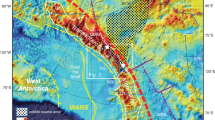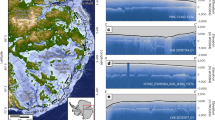Abstract
MR. H. B. WOODWARD, in his “Geology of England and Wales,” p. 28, states that, near Shrewsbury, the Longmynd Rocks are overlaid conformably by the Lingula Flags. I should be glad to see the evidence upon which this conclusion is based. So far as I have examined the district, the facts do not sustain Mr. Woodward's view. Arenig fossils are found at the very head of the ravines which cut back nearly to the quartzite of the Stiper Stones. The beds under the quartzite are similar in lithological character to the Arenig shales above, and I have not heard of the lower shales yielding Lingula flag fossils. At the base of the escarpment is the fault which separates the Stiper Stones rocks from the Longmynd beds. I believe the Stiper Stones beds are Arenig, in the absence of proof to the contrary. The quartzose band of the Stiper Stones may represent the arenaceous bed adopted by the Geological Survey as the base of the Arenig.
This is a preview of subscription content, access via your institution
Access options
Subscribe to this journal
Receive 51 print issues and online access
$199.00 per year
only $3.90 per issue
Buy this article
- Purchase on SpringerLink
- Instant access to full article PDF
Prices may be subject to local taxes which are calculated during checkout
Similar content being viewed by others
Author information
Authors and Affiliations
Rights and permissions
About this article
Cite this article
CALLAWAY, C. Longmynd Rocks. Nature 15, 313 (1877). https://doi.org/10.1038/015313a0
Issue date:
DOI: https://doi.org/10.1038/015313a0



